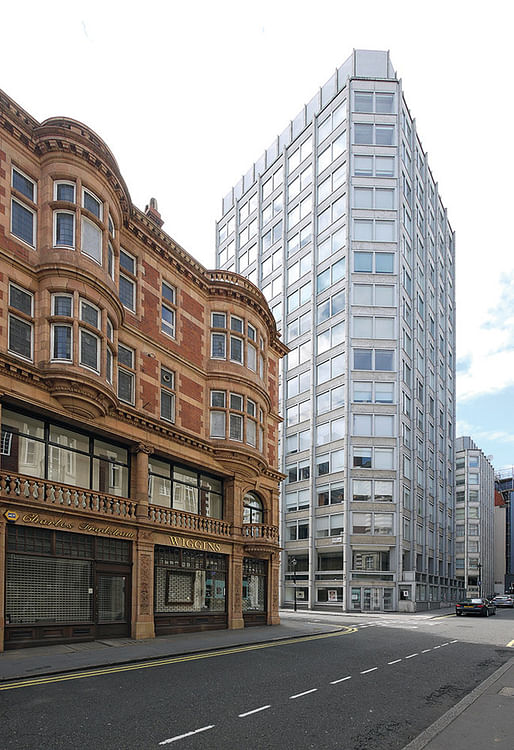
The Economist Plaza was designed by Alison and Peter Smithson in the 1960s and still serves as a seminal example of an inviting and approachable urban space in Central London. The project is successful because it bravely addresses the clash between the aesthetic of the Smithsons and the surrounding historic fabric.

St. James’s is steeped in history and tradition. The Economist Plaza itself shares a wall with Boodle’s, a historic private member’s club designed with Palladian windows and other classical features. In contrast, the Smithsons advocated the aesthetic for New Brutalism by examining and questioning the work of modernists like Mies van der Rohe and Le Corbusier. They were hired for this project after completing the Hunstanton School in Norfolk.

The Smithsons scheme may appear to be modernist but it subtly addresses the surrounding architecture. The original complex contained an office tower, residential building and bank. The Portland stone cladding references classical materials. The Smithsons used a similar facade for all three buildings, modulating the grid of the facade to indicate the different uses, a technique that follows classical principles. A bay window of the Boodle’s Club was also redesigned with the grid. This gesture connects the proportions of the facade and the canted corners to the vernacular motif of a bay window.
The raised plaza connecting the three buildings has a sense of exclusivity characteristic of St James’s. Yet, the arrangement of the buildings on the plaza creates changing views that emphasise the corners of the building and this sense of movement diminishes any feeling of isolation that the raised platforms can create. Instead, the arcades and the visible entrance lobbies create an animated space where anything might happen. As in Michelangelo Antonioni’s film, Blowup, where mimes drive up and around the ramps in an open top car.

The Smithsons were open about the political views influencing their work. As an Economist article points out, they were more socialist leaning than their clients whose views at the time followed 19th Century liberalism. These differences are underlined in the contrast of the New Brutalist buildings with their surroundings. The Plaza and its buildings sit the fence between paying homage to the classical language of St James’s and the Smithsons desire for a new aesthetic. It is this in-between state that has made the project an important part of architectural history in London.
No Comments
Block this user
Are you sure you want to block this user and hide all related comments throughout the site?
Archinect
This is your first comment on Archinect. Your comment will be visible once approved.